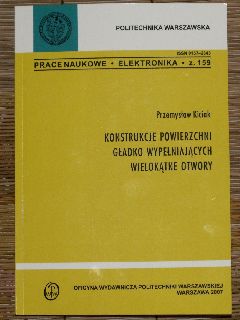
(Constructions of surfaces filling smoothly polygonal holes),
Prace Naukowe, Elektronika, z. 159, Oficyna Wydawnicza Politechniki Warszawskiej, Warszawa 2007.
The book is accompanied with a CD with a package of several hundred procedures: graphical, numerical and geometric.
Errata (a .PDF file) to download from this page. The readers, who find errors not listed there, are kindly requested to report them to me, via the e-mail.

